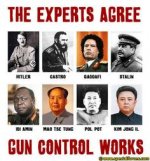News release
From Public Safety Canada
March 20, 2018
Ottawa, Ontario
Public Safety Canada
Crime rates generally in Canada have been on the decline for more than two decades, but offences involving firearms have become more prevalent, especially since 2013. Many communities across the country have been facing a steady increase in gun violence over the past five years. Gun-related homicides, domestic and gender-based violence involving guns, criminal gang activity and gun thefts are all up significantly.
To keep communities safe, the Government of Canada is strengthening Canada's gun laws in a common-sense, focused and effective way. Legislation introduced today prioritizes public safety and effective police work, while respecting law-abiding firearms owners. This government will not bring back the federal long-gun registry.
The new legislation proposes to:
Enhance background checks on those seeking to acquire firearms - by eliminating the existing provision that focuses those checks primarily on just the five years immediately preceding a licence application.
Enhance the utility of those background checks and the effectiveness of the existing licensing system - by requiring that whenever a non-restricted firearm is transferred, the buyer must produce his/her firearms licence, and the vendor must verify that it is valid.
Standardize existing best practices among commercial retailers to maintain adequate records of their inventories and sales. These records would be accessible to police officers on reasonable grounds and with judicial authorization, as appropriate.
Ensure the impartial, professional, accurate and consistent classification of firearms as either "non-restricted" "restricted" or "prohibited" - by restoring a system in which Parliament defines the classes but entrusts experts in the Royal Canadian Mounted Police (RCMP) to classify firearms, without political influence.
Bolster community safety in relation to restricted and prohibited firearms (mostly handguns and assault weapons) - by requiring specific transportation authorizations to be obtained whenever restricted or prohibited guns are moved through the community, except between a residence and an approved shooting range. The rules for transporting non-restricted weapons (such as legally owned rifles and shotguns) will not change.
This legislation will complement prior steps to create a more balanced and representative Canadian Firearms Advisory Committee; to strengthen infrastructure and technology at the border to better interdict gun smuggling, to withdraw from manufacturers/importers the authority to determine in certain circumstances their own firearms classification, and support provinces, territories, municipalities, communities and law enforcement in local initiatives to combat illegal gangs and gun crime.
Quotes
“While Canada is one of the safest countries in the world, increased gun crime has caused too much violence and taken too many lives in communities of all kinds. It has tragically claimed innocent bystanders, children and police officers from coast to coast. With this legislation and our other measures, we are taking concrete steps to make our country less vulnerable to the scourge of gun violence, while being fair to responsible, law-abiding firearms owners and businesses.”
- The Honourable Ralph Goodale, Minister of Public Safety and Emergency Preparedness
“Canadians expect and deserve safe communities, free of gun violence. This proposed legislation will help keep firearms out of the hands of criminals, and respect law-abiding gun owners. ”
- The Honourable Jody Wilson-Raybould, Minister of Justice and Attorney General of Canada
Quick facts
There were 2,465 criminal violations involving firearms in 2016, an increase of 30% since 2013. (Statistics Canada, CANSIM 252-0051.) Gun homicides were up by two-thirds - from 134 in 2013 to 223 in 2016. (Statistics Canada, Homicide Survey.)
Cases of intimate partner violence involving a firearm as reported to the police in 2016 numbered nearly 700- up by a third since 2013. (Family violence in Canada: A statistical profile 2013 and 2016)
There are more than 500 gun-related suicides each year, often among young people. (Statistics Canada, CANSIM 102-0551)
Incidents of breaking-and-entering for the purpose of stealing firearms rose from 516 in 2013 to 804 in 2016. (Statistics Canada, CANSIM 252-0051)
The majority of firearms owned by Canadians are non-restricted, typically "long-guns" such a hunting rifles and shotguns. In 2016, it is noteworthy that 31% of all firearms-related homicides- where the firearm was recovered - involved a firearm that did not require registration. (Statistics Canada, Homicide Survey)
In November 2017, the government announced investments of $327.6 million over five years beginning in 2018-19, rising to $100 million per year thereafter, to support provincial/territorial and community-based initiatives to deal more effectively with guns-and-gangs. This includes prevention, enforcement, disruption and withdrawal.
On March 7, 2018, the Minister of Public Safety and Emergency Preparedness hosted a national summit on gun-and-gang violence to share information and best practices across the country, and to help ensure that the new federal funding is invested to the best advantage.
In Canada there are three types of firearms: "restricted", such as handguns, certain rifles and semi-automatics; "prohibited", such as certain handguns, fully automatic firearms, and sawed off rifles; and "non-restricted" such as ordinary hunting rifles and shotguns. The RCMP Canadian Firearms Program determines the technical classification of a firearm according to criteria in the Criminal Code. Restricted and prohibited firearms require additional safety training, must be registered and their use is limited to certain activities, such as target practice or as part of a collection.



